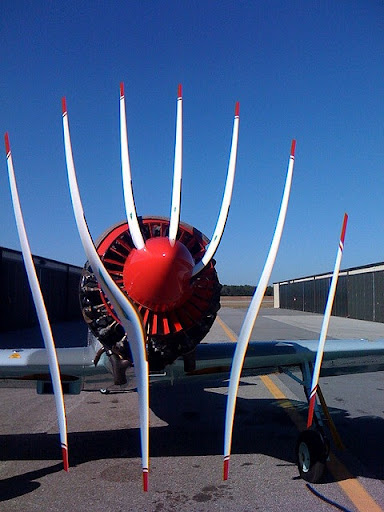I was sorry - but not surprised - to read that after criticizing the '
PowerPoint culture' of US headquarters in Afghanistan, Colonel Lawrence Sellin, a reserve officer from New Jersey, has been
relieved from his post. His 'mistake' (for which I applaud him) was to publish his opinion in
an 'Outside View' column for United Press International. An excerpt follows.
Throughout my career I have been known to walk that fine line between good taste and unemployment. I see no reason to change that now.
Consider the following therapeutic.
I have been assigned as a staff officer to a headquarters in Afghanistan for about two months. During that time, I have not done anything productive. Fortunately little of substance is really done here, but that is a task we do well.
We are part of the operational arm of the International Security Assistance Force commanded by U.S. Army Gen. David Petraeus. It is composed of military representatives from all the NATO countries, several of which I cannot pronounce.
Officially, IJC was founded in late 2009 to coordinate operations among all the regional commands in Afghanistan. More likely it was founded to provide some general a three-star command. Starting with a small group of dedicated and intelligent officers, IJC has successfully grown into a stove-piped and bloated organization, top-heavy in rank. Around here you can't swing a dead cat without hitting a colonel.
For headquarters staff, war consists largely of the endless tinkering with PowerPoint slides to conform with the idiosyncrasies of cognitively challenged generals in order to spoon-feed them information. Even one tiny flaw in a slide can halt a general's thought processes as abruptly as a computer system's blue screen of death.
The ability to brief well is, therefore, a critical skill. It is important to note that skill in briefing resides in how you say it. It doesn't matter so much what you say or even if you are speaking Klingon.
Random motion, ad hoc processes and an in-depth knowledge of Army minutia and acronyms are also key characteristics of a successful staff officer. Harried movement together with furrowed brows and appropriate expressions of concern a la Clint Eastwood will please the generals. Progress in the war is optional.
Each day is guided by the "battle rhythm," which is a series of PowerPoint briefings and meetings with PowerPoint presentations. It doesn't matter how inane or useless the briefing or meeting might be. Once it is part of the battle rhythm, it has the persistence of carbon 14.
And you can't skip these events because they take roll -- just like gym class.
The start and culmination of each day is the commander's update assessment. Please ignore the fact that "update assessment" is redundant. Simply saying commander's update doesn't provide the possibility of creating a three-letter acronym. It also doesn't matter that the commander never attends the CUA.
The CUA consists of a series of PowerPoint slides describing the events of the previous 12 hours. Briefers explain each slide by reading from a written statement in a tone not unlike that of a congressman caught in a tryst with an escort. The CUA slides only change when a new commander arrives or the war ends.
The commander's immediate subordinates, usually one- and two-star generals, listen to the CUA in a semi-comatose state. Each briefer has approximately 1 or 2 minutes to impart either information or misinformation. Usually they don't do either. Fortunately, none of the information provided makes an indelible impact on any of the generals.
One important task of the IJC is to share information to the ISAF commander, his staff and to all the regional commands. This information is delivered as PowerPoint slides in e-mail at the flow rate of a fire hose. Standard operating procedure is to send everything that you have. Volume is considered the equivalent of quality.
There's
more at the link. More of Colonel Sellin's columns for UPI may be found
here. They're very interesting.
I fully share the good Colonel's concerns, because PowerPoint and similar programs have become self-defeating instruments. People concentrate so hard on fitting their briefings and presentations into the constraints of the software that the content often appears secondary in importance to the format. This is devastating to good management and control.
When I was a manager and director in the business world, I insisted that programs like PowerPoint should never, repeat,
never be used in briefings, meetings, etc. for which I was responsible. I tried to train my people to follow the principles of '
completed staff work', and summarize any and every important issue into a single-page memorandum (with supporting documentation attached if necessary). If they couldn't summarize the important points into a single page, I had them break the problem down into smaller 'bite-size' chunks, each of which was a decision point in and of itself, and summarize each decision point in that way. By forcing our staff to think, analyze, and understand problems thoroughly, we achieved great success in almost all our endeavors - the kind of success that would have been impossible if we'd adhered to formulaic presentations and emphasized structure over content.
I'm hardly alone in this opinion. The world-renowned
Dr. Edward R. Tufte has pointed out that the use of PowerPoint
directly contributed to the disastrous series of decisions that led to the destruction of the space shuttle
Columbia and the death of all aboard in 2003. His analysis may be read
here. It makes very sobering reading. Others have found similar problems caused by an over-reliance on presentation software, which has become so common it's even acquired the name of '
Death By PowerPoint'.
I'm sorry that Colonel Sellin will no longer be part of the team advising US leadership in Afghanistan. Judging by what he wrote for UPI, he appears to have been one of the more sensible, level heads in that team. His departure may well have serious consequences if there's no-one of similar insight and forthrightness prepared to speak out when necessary - even placing his career at risk, if it should come to that. Such courage of conviction is all too rare.
Dare I hope that it's not too late for General Petraeus - who's not exactly been backward in the past in criticizing military bone-headedness himself - to 'see the light' and recall Colonel Sellin to his post? I have a feeling that if he's to succeed in the monstrous challenges confronting him, he'll need all the Colonel Sellins he can get!
Peter



















